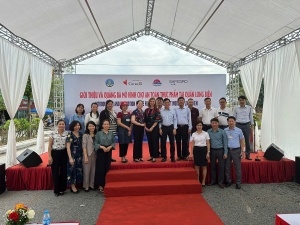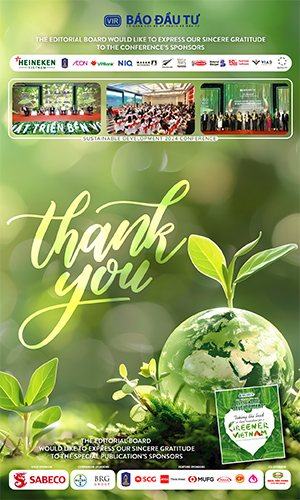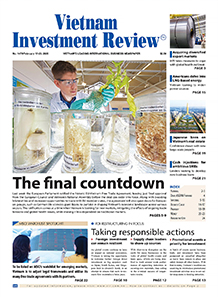Food safety finds its scientific footing in Vietnam's markets
Each evening, as the Binh Dien wholesale market in Ho Chi Minh City winds down, SAFEGRO teams and market supervisors begin their hygiene sampling work. They walk through the stalls collecting direct samples from surfaces that come into contact with food, including worktops and tools. They also collect indirect samples from areas that pose a risk of cross-contamination, such as floors and hanging signs. This is not just another inspection. This is science in action.
 |
The World Health Organization (WHO) and FAO are clear: science is the backbone of safe food systems. But for science to matter, it must reach every corner, not only in policy briefs or laboratories but also in markets like Binh Dien and Van Duc where food is handled every day. That’s where SAFEGRO, funded by Global Affairs Canada and implemented by Alinea International and Guelph University, together with key government partners, is focusing on food safety science.
"SAFEGRO is showing that food safety isn’t an abstract idea. It’s about what happens at your vendor’s stall, in your kitchen, and at your lunch table,” said To Lien Thu, a SAFEGRO food safety expert.
In Ho Chi Minh City, SAFEGRO’s work at the Binh Dien wholesale market, one of Southeast Asia’s largest, brings food safety science into everyday practice.
Following technical training of market staff, over two months, hygiene checks were carried out in major vendor areas. In May, sanitation effectiveness was checked daily; in June it will bechecked three times per week. Sampling followed a structured protocol, using laboratory and quick tests for bacteria such as E. coli and Salmonella (ATP, TPC) to identify microbial risks before and after to demonstrate the benefits of cleaning, sanitation, and disinfection.
Beyond testing, SAFEGRO held mini-lab training, showing vendors how to collect samples, swab surfaces, and interpret results. These sessions turned market staff into active food safety stewards.
Previously, monitoring relied on occasional government checks. Now, thanks to SAFEGRO, market managers are taking the lead in monitoring hygiene themselves.
In Hanoi, science is also changing behaviour, one vendor at a time. At Van Duc Market, a bustling retail hub, SAFEGRO trained small traders in practical hygiene, cleaning, and sanitation. Among them was Nguyen Van Nham, a vermicelli maker. He became a local hero of food safety: first to arrive at training, last to leave. He learned the six-step handwashing method, cleaning his stall meticulously, and asked questions about contamination risks.
"I am very grateful for the training,” he said. “The lessons are practical, and the teacher is very dedicated and easy to understand.”
The curriculum taught retailers to store produce at least 10 cm off the ground, avoid using old chemical containers for food, wash hands before and after handling food, clean and sanitise not just their stalls, but their phones, and avoid eating at their selling points.
These may seem simple, but each behaviour is backed by global food safety science, and directly contributes to reducing risks of foodborne illness.
 |
The core of SAFEGRO’s success lies in cultivating a positive food safety culture, a shared responsibility for behaviour changes across the supply chain. Whether through scientific monitoring in Binh Dien or hygiene education in Van Duc, the approach is grounded in empowerment, not enforcement.
This aligns with WHO’s 2025 message: Food safety is not static. It is proactive. It is collaborative. It is built on science. It requires individual responsibility imbedded in a food safety culture
And science, as SAFEGRO shows, is not just about data, it’s about people. Families now eat more confidently. Traders take pride in cleaner practices. Vendors speak the language of microbial risk, often for the first time.
Every step in the food chain is closely connected. If one part doesn’t do well, it can harm not just one person’s health, but the whole community, and even future generations, if harmful substances affect our ability to have healthy children. A strong and lasting food safety culture only happens when everyone takes part, shares responsibility, and understands the science behind safe food in daily life.
As food systems face increasing pressure from climate change, urbanisation, and emerging pathogens, the message of World Food Safety Day 2025 feels prescient: science must not only inform us but prepare us.
In Vietnam, SAFEGRO is making that future real, not with sweeping mandates but with handwashing stations, lab and rapid field kit testing, transparent results, and informed communities.
From Ho Chi Minh City’s wholesale engines to Hanoi’s neighbourhood stalls, food safety science is no longer locked in laboratories. It’s on the ground. It’s in action. And it’s protecting lives.
 | Behavioural change still required within food safety Food safety is currently implemented at many different levels around the world. Brian G. Bedard, director of Food Safety and Animal Health at Alinea International, offered VIR’s Nguyen Huong some recommendations on improving the culture in Vietnam to match global practices. |
 | Joint initiative promotes food safety at traditional markets in Hanoi An event was held on September 19 in Hanoi's Long Bien district to promote food safety at traditional markets. |
 | How Asia can revolutionise its food systems before it’s too late Qingfeng Zhang, senior director of agriculture, food, nature, and rural development at Asian Development Bank (ADB), outlines bold strategies to transform Asia’s agri-food systems to secure a sustainable, inclusive, and resilient future for 4.7 billion people. |
 | Agriculture sector sees robust growth in Q1 Agricultural businesses have emerged as a bright spot, showing impressive growth despite a market environment still fraught with challenges in Q1. |
 | Nationwide sweep targets counterfeit food and drugs Counterfeit goods, particularly milk, medicines, and functional foods, were the key focus of a government press briefing on May 6. |
What the stars mean:
★ Poor ★ ★ Promising ★★★ Good ★★★★ Very good ★★★★★ Exceptional
Related Contents
Latest News
More News
- Japan's Rakuten Symphony to trial 4G and 5G Open RAN mobile networks in Vietnam (June 06, 2025 | 11:57)
- Swire Coca-Cola unveils 2024 sustainability milestones (June 06, 2025 | 11:46)
- KMS Technology strengthens commitment to diversify, equity, and inclusion (June 05, 2025 | 16:13)
- HanoiPlas 2025 showcases advanced plastics, rubber, recycling solutions (June 05, 2025 | 12:16)
- OpenGMSL Association formed to revolutionise future of in-vehicle connectivity (June 05, 2025 | 11:08)
- Hoan My Academy signs deals to drive modern medical training and tech-driven healthcare (June 05, 2025 | 10:53)
- Vietnam delegation eyes over $2 billion in US agri-import deals (June 04, 2025 | 14:48)
- Vietnam elevates regional group with impact and vision (June 04, 2025 | 14:40)
- Detection gaps widen as AI-fuelled attacks reshape cybersecurity in the region (June 04, 2025 | 11:13)
- Brewing sustainability: Carlsberg Vietnam cleans up for a greener tomorrow (June 04, 2025 | 09:30)


 Tag:
Tag:


























 Mobile Version
Mobile Version